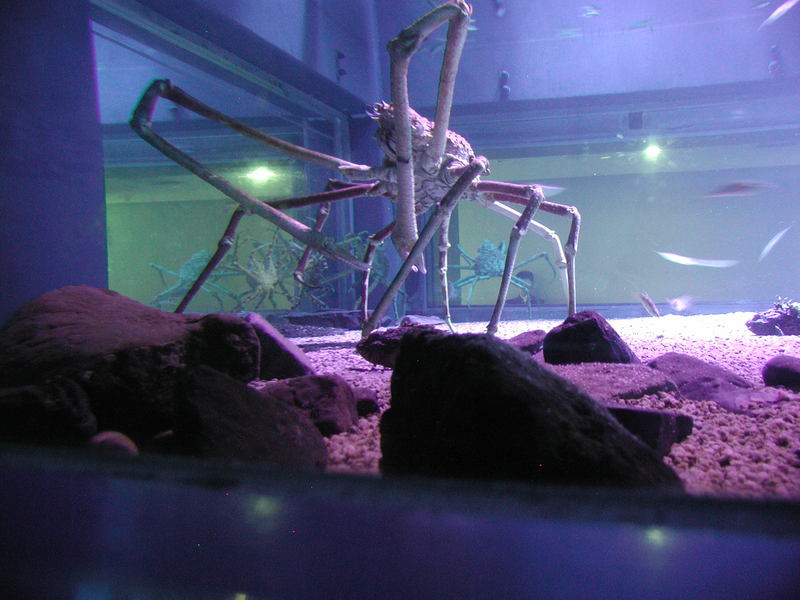|
Japanese spider crab (Macrocheira kaempferi) - Wiki
| 제목: | Japanese spider crab (Macrocheira kaempferi) - Wiki
| |

| 해상도: 2048x1536
파일크기: 717520 Bytes
촬영일: 2002:10:21 17:11:49
사진기: C3000Z (OLYMPUS OPTICAL CO.,LTD)
F number: f/2.8
Exposure: 100/100 sec
Focal Length: 66/10
등록시간: 2007:09:20 10:18:30
|
Japanese spider crab
From Wikipedia, the free encyclopedia
[Photo] Japanese spider crab (Macrocheira kaempferi). Spider crab at the Kaiyukan Aquarium in Osaka, Japan. Date 21. Oct. 2002. Author Teddy Yoshida
The Japanese spider crab, Macrocheira kaempferi, is the largest living arthropod; fully grown it can reach a leg span of almost 4 m (13 feet), a body size of up to 37 cm (15 inches) and a weight of up to 20 kg (44 pounds). The crab's natural habitat is on the bottom of the Pacific Ocean (some 300???400 m deep) around Japan, where it feeds on dead animals and shellfish. It is believed to have a life expectancy of up to 100 years.
Because it is a particularly old species of crab, it is often referred to as a living fossil. Currently, this is the only species of the genus Macrocheira, but there have been two reports of other fossil specimens.
Physical characteristics
The crab has an orange body, but it has white spots on its thin legs. In male specimens, the limbs which the claws are located on become longer than its other limbs, and a large male, when spread out, can widen them to more than 3 metres. Unconfirmed reports suggest a maximum spread of nearly 8 metres. The width of the oval-shaped and vertically rounded shell can reach up to 30 cm, and can be up to 40 cm long.
Its compound eyes are situated on the front, and two thorns stick out between them. Younger specimens feature hair and thorns on the shell, and their frontal horns are longer, but these gradually atrophy as they grow older.
Natural habitat and human impact
The Japanese spider crab's habitat is limited to the Pacific side of the Japanese archipelago. They often live in the seabed at depths of 150???800 m, but are found most prominently in depths of 200???300 m. In spring, they can often be found laying eggs in waters as shallow as 50 m.
The Japanese spider crab is caught using small trawling nets, and is often eaten salted and steamed. It is caught in the Sagami, Suruga, and Tosa bays and also around the Izu Islands. Catching of the crab is forbidden during the spring, when it lays its eggs.
It is considered a specialty around Suruga Bay, but numbers of the crab have diminished over recent years, and there are efforts to protect them. In Wakayama Prefecture, the crabs are caught when they move to shallower waters in the spring.
The Japanese spider crab is also used for research and ornamental purposes. It has a gentle disposition and is often reared in aquaria.
http://en.wikipedia.org/wiki/Japanese_spider_crab
| The text in this page is based on the copyrighted Wikipedia article shown in above URL. It is used under the GNU Free Documentation License. You may redistribute it, verbatim or modified, providing that you comply with the terms of the GFDL. |
^o^
동물그림창고 똑똑전화 누리집
^o^
|
|
|

